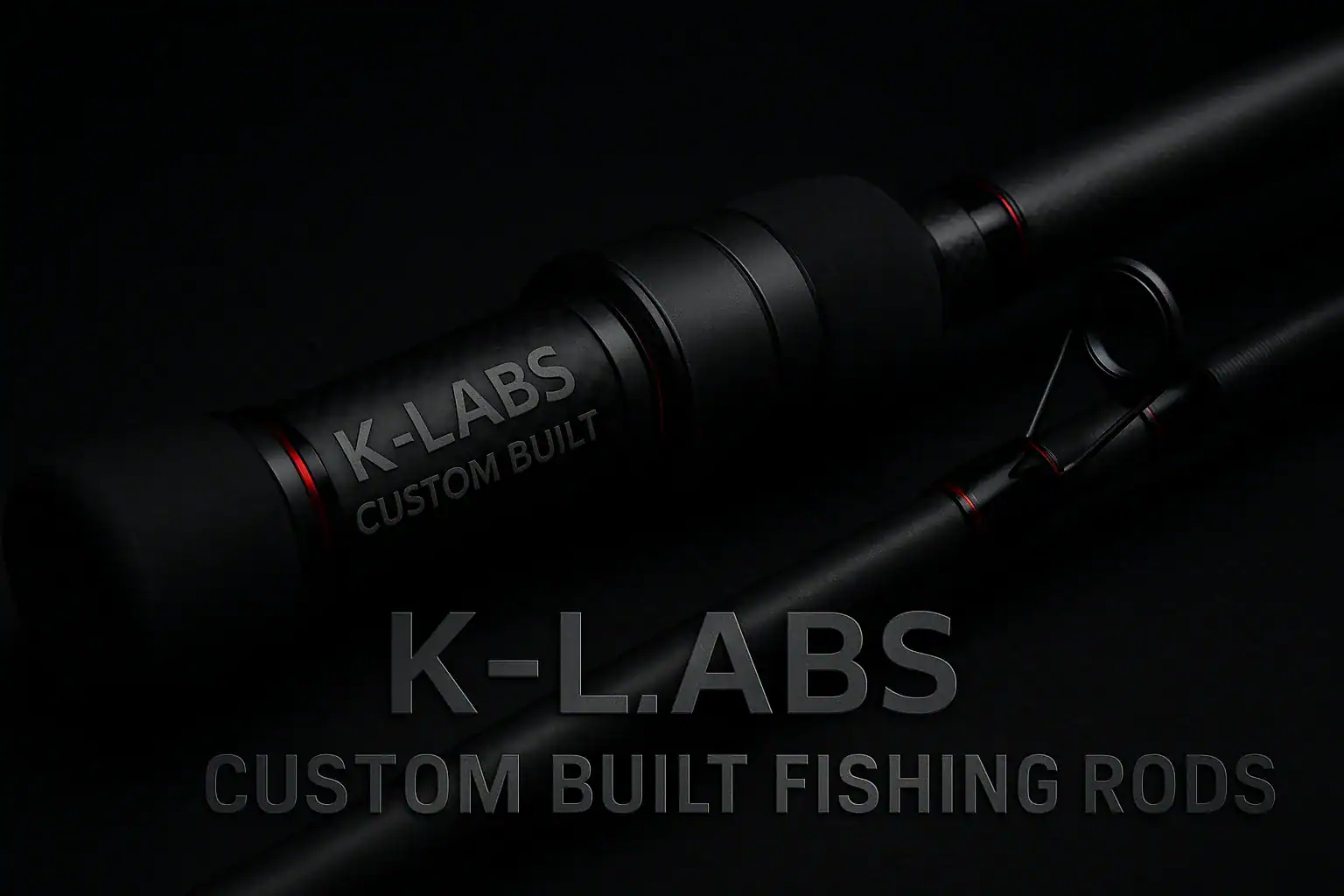By K-Labs Custom Rods NZ
Introduction
Ask most anglers what makes a rod “sensitive” and you’ll usually hear one answer:
“High modulus carbon.”
It’s the most overused line in rod marketing — and one of the least understood.
Sensitivity is not a single material.
It’s a combination of design factors that determine how much vibration reaches your hand.
In fact, a well-built 24T rod can feel more sensitive than a poorly-built 40T rod.
Here’s the truth behind rod sensitivity, based on real workshop experience — not marketing.
1. Blank Modulus Is Only One Piece of the Puzzle
High-modulus carbon can improve sensitivity thanks to reduced weight and increased stiffness —
but only if everything else around it supports that performance.
A high-modulus blank weighed down with:
- heavy guides
- thick epoxy
- bulky grips
- excess glue
- poor balance
…will feel dead.
A lower-modulus blank with:
- light guides
- tight wraps
- minimal epoxy
- efficient handle design
- good balance
…can feel alive and crisp.
Modulus matters, but it is nowhere near the whole story.
2. Guide Weight Influences Sensitivity More Than Most Realise
Every guide is a weight hanging off the blank.
Weight slows recovery.
Slower recovery = reduced sensitivity.
This is why guide systems matter so much:
- Fuji K-Series
- Fuji Torzite
- Titanium frames
These dramatically reduce weight and increase vibration transfer.
Often, switching to lighter guides improves sensitivity more than upgrading the blank.
3. Handle Design Determines What You Actually Feel
Your hand is the sensor.
The handle is the interface.
A poorly fitted or overly bulky grip absorbs vibration before it reaches your hand.
Key factors:
- EVA vs cork density
- Correct fit (not too tight, not swimming in glue)
- Split grip vs full grip
- Reel seat material
- Direct blank exposure under the reel seat
A properly fitted EVA split grip can transmit more feel than a mass-produced cork handle packed with excess adhesive.
4. Rod Weight & Balance Change Perceived Sensitivity
Two rods built on the same blank can feel totally different.
A rod that’s tip-heavy:
- feels sluggish
- feels less responsive
- transmits less vibration
A well-balanced rod feels faster, lighter, sharper, even before you cast it.
This is where custom builders beat factory rods every time.
5. Recovery Speed = Sensitivity
When you jig or twitch a lure, the blank is constantly rebounding.
A rod with fast recovery feels crisp and sensitive.
A rod with slow recovery feels dull — even if the blank modulus is high.
Recovery speed is affected by:
- guide weight
- blank taper
- wall thickness
- thread wraps
- epoxy build
- guide spacing
A lighter, cleaner build improves recovery immediately.
6. Connection Points: Where Sensitivity Gets Lost
Anywhere two materials meet, vibration can be absorbed.
Examples:
- excess glue under grips
- reel seats with gaps
- thick epoxy on guide feet
- misaligned guides
- grip sections glued unevenly
A rod is only as sensitive as its weakest vibration link.
This is why skilled custom builds always feel “sharper.”
7. Why a Blank Is at Its Very Best With Nothing On It
This is pure rod-builder truth:
A raw blank performs at its peak before anything is added.
Bare carbon has:
- perfect recovery
- no added weight
- maximum vibration transfer
- pure taper response
The moment components are added — even lightweight ones — the blank is changed.
Guides add weight.
Thread and epoxy add hard points.
Grips add mass and vibration damping.
Reel seats add leverage and stiffness.
A finished rod can never feel exactly like the bare blank.
The goal of custom building is to preserve as much of that original character as possible.
8. And the More You Add, The More the Action Changes
A blank has a natural flex curve.
Every component shifts that curve slightly.
- More guides = stiffer tip
- Larger guides = slower recovery
- Excess thread/epoxy = hard spots
- Long, heavy rear grip = stiffens the butt
Even finger-length changes in component placement alter the rod’s action and perceived power.
This is why two rods built on the same blank can feel completely different in the hand.
Conclusion
Sensitivity is not a single number or modulus rating.
It’s the sum of every decision in the build:
- blank choice
- guide system
- wraps
- epoxy quality
- handle design
- balance
- recovery speed
- and preserving the blank’s natural character
When all of this comes together, you get a rod that feels alive, not just stiff.
This is the difference between a mass-production rod and a precision-built K-Labs custom rod.
